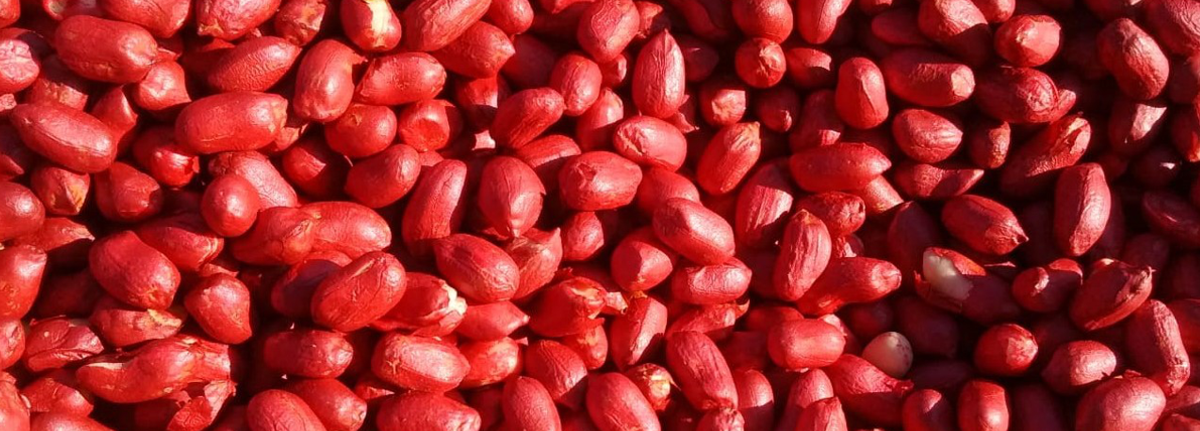Argentine Peanut Crop Report
Season 2019/2020 – #1
General Overview
With rains well below expectations and historical averages for this stage of the year, Argentina is kicking off a new peanut season. In the middle of an uncertain context from the economic standpoint, the Argentine farmers and shellers are ready to start a new season in which the utmost expectation is to achieve similar results in terms of quality and yield in relation to the previous crop. As of end of October 2019, there has been no significant rainfall throughout the peanut areas, which makes it difficult to start planting since moisture levels in the soil are not suitable. Although it is still early, some concern is perceived among farmers, given that soils are in drought condition. Important rainfall is necessary to alleviate the situation and reverse the reported condition.
The optimal window for planting usually occurs between late October and November, which means that we are still on time to achieve a total reversal of the situation described. As of the date of this report, the planting progress does not exceed 15%, which is a great delay compared to last season, where 30% had already been reached on the same date.

Beginning of peanut plantings in Argentina
Main Area Map Peanuts from Argentina
The main peanut area in Argentina includes the provinces of Cordoba, La Pampa, San Luis and Buenos Aires. In general terms, it can be divided as follows:

Rainfall and Temperature Analysis
To gain some context, Argentina has gone through an extremely dry winter and a beginning of spring with rainfall well below normal figures. Likewise, temperatures have also been abnormal for the current season. These conditions generated a depletion of soil water reserves.
According to our reference map, the Northern, Eastern and Southern areas received the best rainfall records during the last weeks. Although scarce, they were enough to start slowly with peanut sowing activities. The moisture profiles are not loaded, although they have enough moisture to achieve adequate plant germination.
On the other hand, the Central and Western areas of the province of Cordoba and San Luis, are the most compromised in terms of moisture levels, which means that planting tasks are completely paralyzed. In all areas, heavy rains are urgently needed to reverse the bad initial outlook. If there are no rains greater than 60/80 mm in the short term (maximum of 10 days), the peanut crop could be affected.

Cumulative precipitation from Oct 1st to Oct 21st 2019, in the province of Cordoba

Cumulative precipitation from Oct 22nd to Oct 25th 2019, in the province of Cordoba
The following figure, issued by the BCCBA Agronomic Information Department, clearly depicts the lack of rainfall in relation to historical records:

Accumulated rainfall in the province of Cordoba (by department) June to October 2019 vs. historical average 2007-2019
Available Water Content in Cordoba
The maximum retention capacity or “field capacity” implies that the extraction of water by the vegetables occurs without any difficulty. Between the field capacity and the permanent wilting point there is the range of what we call useful water in the arable layer.
The figure shows that, during October in the peanut area, the average values are between 0% and 10% of useful water in the soil profile (extreme drought).
The values improve towards the east side of Cordoba and northeast of the province of Buenos Aires.

Available water content in Argentina as of October 28th, 2019 Source: FAUBA
Crop-related Tasks
In the Southern and Eastern areas of the province of Cordoba and in the province of La Pampa and Northeast of Buenos Aires, plantings began around October 20th.
Should important rains occur in the short term, we consider that all the sowings will be framed within the optimum peanut sowing window, which would leave the aforementioned delays totally behind.
The average planting density has been 14 seeds per meter so far, at a distance between rows of 70 cm; thus seeking an average per hectare of 200,000 germinated plants.
On the other hand, weed treatments continue (pre-emergent) for weed control in all areas of our reference map. Considering that forecasts for spring and beginning of the summer show rains below the historical average, it will be important to thoroughly monitor the fields to achieve adequate weed control, since they compete directly with the crop for the use of water.

Peanut seeds after polymer and professional treatment process in the Gastaldi’s seed treatment facility
Summary
The initial outlook for the 2019/2020 peanut season in Argentina is far from optimal. The low level of rains during autumn and winter have generated drought conditions throughout the entire peanut area. Within the complicated situation, the Central, Eastern and Southern areas present a comparatively better overview to the Northern and Western ones. Although plantings have begun in those areas that present a better water situation, a generalized delay is reported (15% advance vs 30% at the same date last year).
Even though it is still early in the season, rains are urgently needed to resume activities and thus avoid major complications. 85% of the area that remains to be sown should be able to be completed in a period not exceeding 25 days, provided that the weather conditions allow it.


Do you have a commercial inquiry?
Request for price quote
Other questions or comments?
Contact us: stembras@gastaldihnos.com.ar
Follow Gastaldi on social media:



